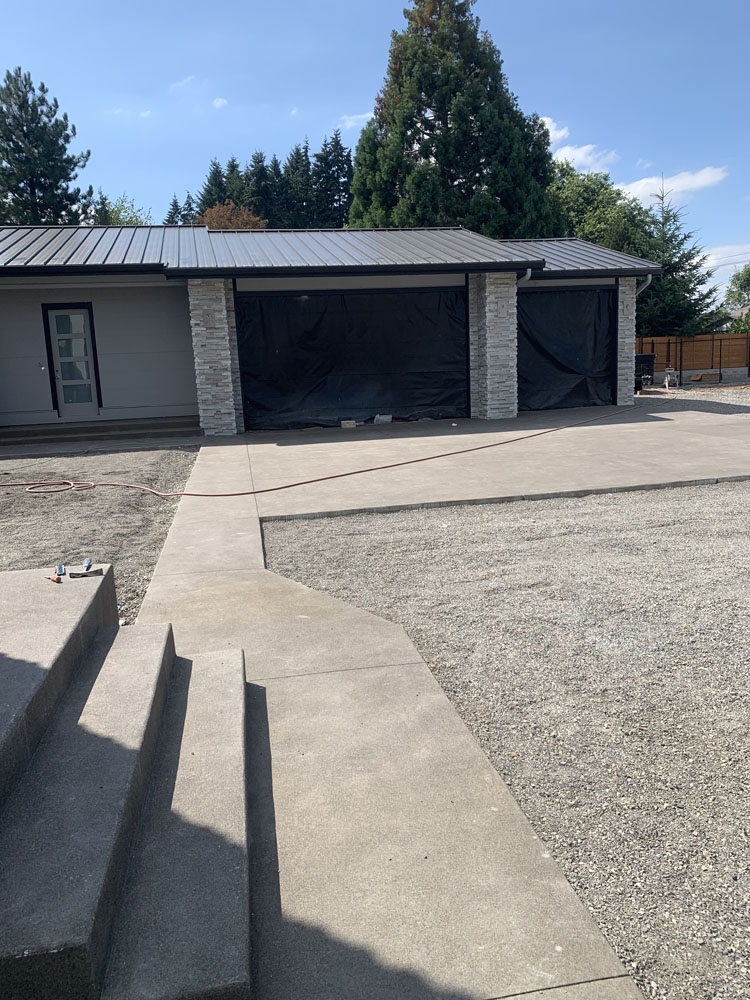Introduction
When it comes to outdoor spaces, walkways often serve as the vital arteries connecting different areas of your property. Whether it's a charming garden path or a durable driveway, masonry walkways are popular choices due to their aesthetic appeal and durability. However, safety shouldn't take a back seat when designing these pathways. In fact, ensuring your masonry walkway is slip-resistant is crucial for the well-being of your family and guests. This article will delve into various strategies, materials, and maintenance practices that can help you achieve a secure walking surface.
Safety First: How to Ensure Your Masonry Walkway is Slip-Resistant
A slip-resistant masonry walkway isn't just about appearance; it's about functionality and safety. With varying weather conditions and foot traffic, these surfaces can become slippery over time. Therefore, understanding how to maintain their integrity is essential.
Understanding Slip-Resistance in Masonry Walkways
Slip-resistance refers to the ability of a surface to prevent slips and falls under various conditions. For masonry walkways, this involves maintenance of masonry walkways considering texture, slope, moisture levels, and materials used.
What Factors Affect Slip-Resistance?
Texture: A rougher texture generally provides better traction. Slope: Steep inclines can increase the likelihood of slipping. Water Accumulation: Puddles or ice can make surfaces hazardous. Material Type: Different types of stone or concrete have varying slip-resistance properties.Choosing the Right Materials for Your Masonry Walkway
Selecting materials that enhance slip-resistance should be your first step in creating a safe masonry walkway.
Popular Materials for Masonry Walkways
Concrete: Affordable and versatile but can be slick unless treated. Brick: Offers natural texture but might need sealing for enhanced grip. Natural Stone: Provides beauty and excellent traction with proper finishing. Pavers: Highly customizable and often designed with slip-resistance in mind.Evaluating Material Texture and Grip
When choosing materials for your walkway, consider their surface finish:
- Honed: Smooth but may require anti-slip treatments. Textured: Naturally slip-resistant but can gather dirt more easily. Rough: Generally provides excellent grip but may be uncomfortable for bare feet.
Design Considerations for Slip-Resistant Walkways
The layout of your masonry walkway plays a significant role in its overall safety.
Walkway Width and Slope
Ensure that your walkway has sufficient width for comfortable passage while maintaining an appropriate slope that avoids water accumulation.
Optimal Slopes for Safety
- Flat surfaces are ideal; however, if slopes are necessary:
- Aim for a gradient between 1% to 2%. Avoid steep inclines greater than 5%.
Incorporating Drainage Solutions
Good drainage prevents water from pooling on your walkway—an essential consideration for maintaining slip-resistance.
Types of Drainage Solutions
French Drains: Effective at redirecting water away from paths. Curbing: Helps guide water flow away from the walkway. Permeable Pavers: Allows water to seep through rather than accumulate.Implementing Anti-Slip Treatments
Even with careful material selection and design considerations, additional treatments can bolster safety further.
Available Anti-Slip Products
Anti-Slip Coatings: These products create a textured surface on existing materials. Grip Strips: Adhesive strips that add traction without altering aesthetics significantly. Sealants with Grit Additives: Sealants mixed with fine aggregates enhance grip while protecting the surface.How to Apply Anti-Slip Treatments?
Clean the surface thoroughly before application. Follow manufacturer instructions carefully regarding drying times and environmental conditions. Reapply regularly depending on foot traffic levels and weather exposure.Regular Maintenance Practices for Masonry Walkways
To ensure longevity and continued safety of your masonry walkway, implementing regular maintenance practices is key.
Cleaning Your Walkway Regularly
Dirt, algae, moss, or debris can make surfaces slippery—clean them off regularly!
How Often Should You Clean?
- For high-traffic areas: Monthly In shaded areas prone to mold: Bi-weekly During rainy seasons: Weekly
Inspecting for Damage or Wear-and-Tear
Routine inspections help identify potential hazards like cracks or loose stones before they become problematic.
What to Look For?
Cracks or chips in the material Loose pavers or bricks Areas where algae or mold accumulateConclusion
Creating a safe masonry walkway requires thoughtful planning from material selection to ongoing maintenance practices aimed at enhancing slip-resistance features. By understanding how different elements contribute to safety—texture, design considerations, anti-slip treatments—you'll be well-equipped to ensure that your outdoor pathways not only look great but also protect everyone who walks upon Masonry Contractor them.

FAQs
1. What makes a masonry walkway slip-resistant?
A combination of textured materials, proper slope design, good drainage solutions, and anti-slip treatments enhances the slip-resistance of masonry walkways.
2. Can I treat my existing masonry walkway?
Yes! There are multiple anti-slip coatings available that you can apply over existing surfaces to improve their grip without needing complete replacement.
3. How often should I clean my masonry walkway?
It’s advisable to clean high-traffic areas monthly while inspecting seasonal changes; shaded spots may need bi-weekly cleaning due to mold growth potential.
4. What materials are best for creating a slip-resistant pathway?
Natural stone offers excellent traction when finished properly; textured concrete pavers also provide good options if installed correctly with adequate drainage systems in place.
5. Why do I need drainage solutions?
Proper drainage prevents water accumulation which leads directly into dangerous slipping hazards during wet weather conditions on paved paths!
6. Is it possible to install pavers myself?
While DIY installations are possible if you have some construction knowledge & tools available; hiring professionals ensures optimal results tailored specifically toward creating safer steps outdoors!
By applying these principles effectively within each project undertaken around homes today—we not only safeguard ourselves against accidents occurring unexpectedly outside—but also elevate overall property values tremendously too!
Thank you for exploring "Safety First: How to Ensure Your Masonry Walkway is Slip-Resistant." May your walkways remain safe!